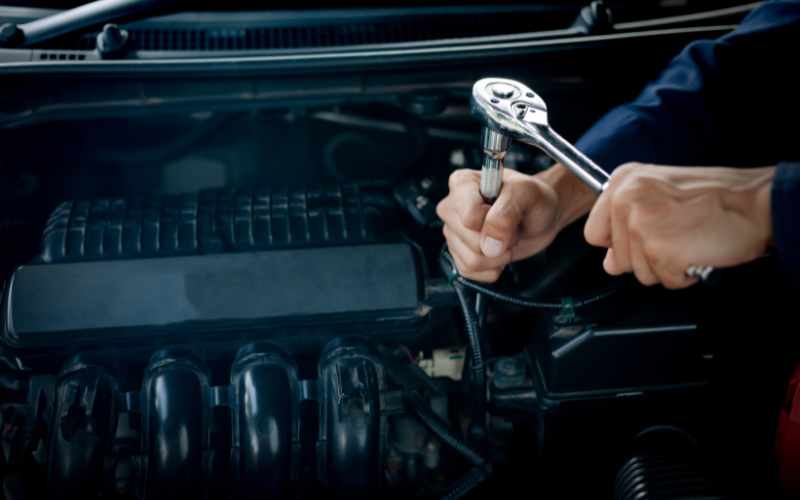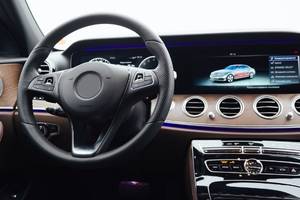Introduction
When it comes to owning a Land Rover, it's not just about the thrill of off-road adventures; it's also about understanding the complications of its maintenance. One important component that demands attention is the ECU (Engine Control Unit). This guide will take you through the world of Land Rover ECU repair solutions, starting with identifying common ECU problems, and then moving on to selecting the right tools, applying proven diagnostic techniques, implementing best repair practices, and maintaining your ECU for long-term performance.
1. Identify Common Land Rover ECU Problems
Problem 1: Unusual Engine Behavior
You may notice your Land Rover's engine revving up and down or stalling. These are common symptoms of a faulty ECU.
Problem 2: Check Engine Light
A steady or blinking check engine light is a direct indication of ECU issues. This light is your Land Rover's cry for help!
Problem 3: Poor Fuel Efficiency
If you're stopping too often at gas stations, it might not be your driving style. It could be your ECU not managing the fuel-air mixture correctly!
Problem 4: Issues with the Ignition System
Trouble starting your Land Rover? It could be your ECU failing to send the right signals to the ignition system.
Problem 5: Transmission Problems
If your Land Rover is stuck in one gear, or if gear changes are not smooth, you can bet your bottom dollar that there's an ECU issue.
There you go, common Land Rover ECU problems, decoded! But fret not. With the right set of tools and the application of proven techniques, you can solve these problems. So, ready to get your hands dirty and dive into the world of land rover ecu repair solutions? Stay tuned for our next segment, where we'll talk about selecting the right tools for ECU repair.
Now that you're familiar with common ECU problems, let's talk tools. After all, a craftsman is only as good as his tools, right?
Tool 1: OBD2 Scanner
An OBD2 scanner is the Swiss Army knife for any land rover ecu repair solutions. This tool reads error codes from your ECU and helps pinpoint the problem.
Tool 2: Digital Multimeter
A multimeter measures voltage, resistance, and current. It’s incredibly handy when you need to check if your ECU is receiving and sending the right signals.
Tool 3: Soldering Iron
A good old soldering iron is essential for any ECU repairs. It allows you to fix broken connections on the ECU’s circuit board.
Tool 4: ECU Repair Kit
While not exactly a tool, an ECU repair kit is filled with useful components like capacitors and resistors. It's like a first-aid kit for your ECU!
Tool 5: ECU Programming Software and Equipment
In some cases, you might need to reprogram your ECU. Specialized software and equipment are required for this.
Remember, it's not just about having these tools, but also knowing how to use them. So, be prepared to put in some time to learn the ropes. Up next, we’ll dive into the techniques for diagnosing ECU issues. Stick around; you're not going to want to miss it!
3. Apply Proven Techniques for Diagnosing ECU Issues
Now that we've covered tools, let's delve into the exciting world of diagnostics. Here's how you can sleuth your way to the root of your Land Rover's ECU problems.
Technique 1: Use the OBD2 Scanner
Remember the OBD2 scanner from our toolbox? It's now time to put it to good use. This handy device reads and decodes the error codes from your ECU. From misfires to malfunctioning sensors, these codes tell you where the problem lies.
Technique 2: Check for Physical Damage
Sometimes, the issue with your ECU could be as simple as a loose connector or a damaged wire. A visual inspection can go a long way in identifying these problems.
Technique 3: Test the ECU Power Supply
Is your ECU getting the power it needs? Use your multimeter to check the voltage levels. If they're off, your ECU might not be functioning correctly.
Technique 4: Inspect the Circuit Board
Cracked solder joints or damaged components on the ECU’s circuit board can cause a slew of problems. With a keen eye and a steady hand, you can spot and fix these issues.
Technique 5: Reprogram the ECU
In some cases, your Land Rover's ECU might just need a software update or reprogramming. For this, you'll need the programming software and equipment we mentioned earlier.
Remember, diagnosing ECU issues isn't a one-time process. It’s a continuous journey of learning and adapting. And with this knowledge, you're well on your way to becoming an expert in land rover ecu repair solutions. Next up, we'll explore best practices for ECU repair. Stay tuned!

4. Implement Best Practices for ECU Repair
So, you've diagnosed the problem, and it's time to roll up your sleeves and get to work. Let's focus on the best ways to repair your Land Rover's ECU and get it back in tip-top shape.
Practice 1: Follow Safety Measures
Before you dive in, ensure your workspace is clean and organized. Always disconnect the battery before starting your repair. Safety first, remember?
Practice 2: Be Gentle
ECUs are delicate. Handle with care. Avoid forcing connectors and always use the proper tools for disassembly and reassembly.
Practice 3: Solder with Precision
If you're dealing with a damaged circuit board, your soldering skills will be put to the test. Remember to use a low-wattage soldering iron and quality solder to avoid additional damage.
Practice 4: Seek Professional Help When Needed
There's no harm in admitting when a job is beyond your skill set. For complex repairs, don't hesitate to seek help from a professional specializing in Land Rover ECU repair solutions.
Practice 5: Test Before Reinstalling
After carrying out the repair, always test the ECU before reinstalling it. This will save you from any surprises down the line.
By implementing these best practices, you can ensure your ECU repair is successful and long-lasting. But your journey with your Land Rover's ECU doesn't end here; it's just as important to maintain it for long-term performance. Let's discover how in the next section.
5. Maintain Your Land Rover ECU for Long-Term Performance
Keeping your Land Rover purring like a well-fed cat requires regular maintenance of its ECU. Let's explore some practical ways to ensure the longevity of your ECU.
Routine Inspection:
Schedule regular visual inspections of your ECU. Check for any signs of wear and tear, loose connections, or corrosion. This proactive approach will help identify potential problems before they escalate into bigger issues.
Cleanliness is Key:
Just like you wouldn't let your Land Rover's exterior gather dust, the same applies to its ECU. Regularly clean the ECU and its housing to prevent dust and grime from interfering with its function. Remember, a clean ECU is a happy ECU!
Keep it Dry:
Water and electronics are arch-enemies. Make sure the ECU compartment is well-sealed to prevent any moisture ingress.
Timely Repairs:
Don't procrastinate when it comes to repairs. If you've identified an issue during your routine inspection, address it promptly. Timely repairs not only prevent further damage but also extend the life of your ECU.
Professional Check-ups:
While DIY maintenance is great, it's beneficial to get your ECU professionally checked now and then. Consider it a "health check-up" for your Land Rover's ECU. Professionals who specialize in Land Rover ECU repair solutions have tools and expertise that can catch issues you might miss.
By incorporating these maintenance practices, you can extend the life of your ECU and enhance your Land Rover's performance. Remember, a well-maintained ECU is key to ensuring your Land Rover continues to conquer roads and hearts alike!
Conclusion
In summary, understanding and maintaining your Land Rover's ECU is important for making sure ideal performance and longlife of your vehicle. By identifying common ECU problems, equipping yourself with the right tools, applying effective diagnostic techniques, following best repair practices, and sticking to a regular maintenance schedule, you can handle ECU issues with confidence. Whether you choose to DIY or seek professional help, being motivated about ECU care will keep your Land Rover running smoothly and ready for any adventure.
FAQs on
Land Rover ECU Repair Solutions: Proven Techniques
-
1. What are common symptoms of a faulty ECU in a Land Rover?
Ans.
Some common symptoms include unusual engine behavior, a steady or blinking check engine light, poor fuel efficiency, issues with the ignition system, and transmission problems.
-
2. What tools do I need for Land Rover ECU repair?
Ans.
Essential tools include an OBD2 scanner, a digital multimeter, a soldering iron, an ECU repair kit, and ECU programming software and equipment.
-
3. How can I diagnose ECU problems in my Land Rover?
Ans.
Diagnosis can be done using an OBD2 scanner to read error codes, checking for physical damage, testing the ECU power supply with a multimeter, inspecting the circuit board for cracks, and reprogramming the ECU if required.
-
4. What are the best practices for repairing a Land Rover ECU?
Ans.
Best practices include following safety measures, handling the ECU gently, soldering with accuracy, seeking professional help when needed, and testing the ECU before reinstalling it.
-
5. How can I maintain my Land Rover's ECU for long-term performance?
Ans.
Regular maintenance includes routine inspections, keeping the ECU clean and dry, performing timely repairs, and getting professional check-ups periodically.
-
6. Is it possible to reprogram the ECU myself, or should I seek professional help?
Ans.
While some ECU reprogramming can be done DIY with the right software and equipment, complicated issues might require professional assistance to make sure the job is done correctly and safely.



